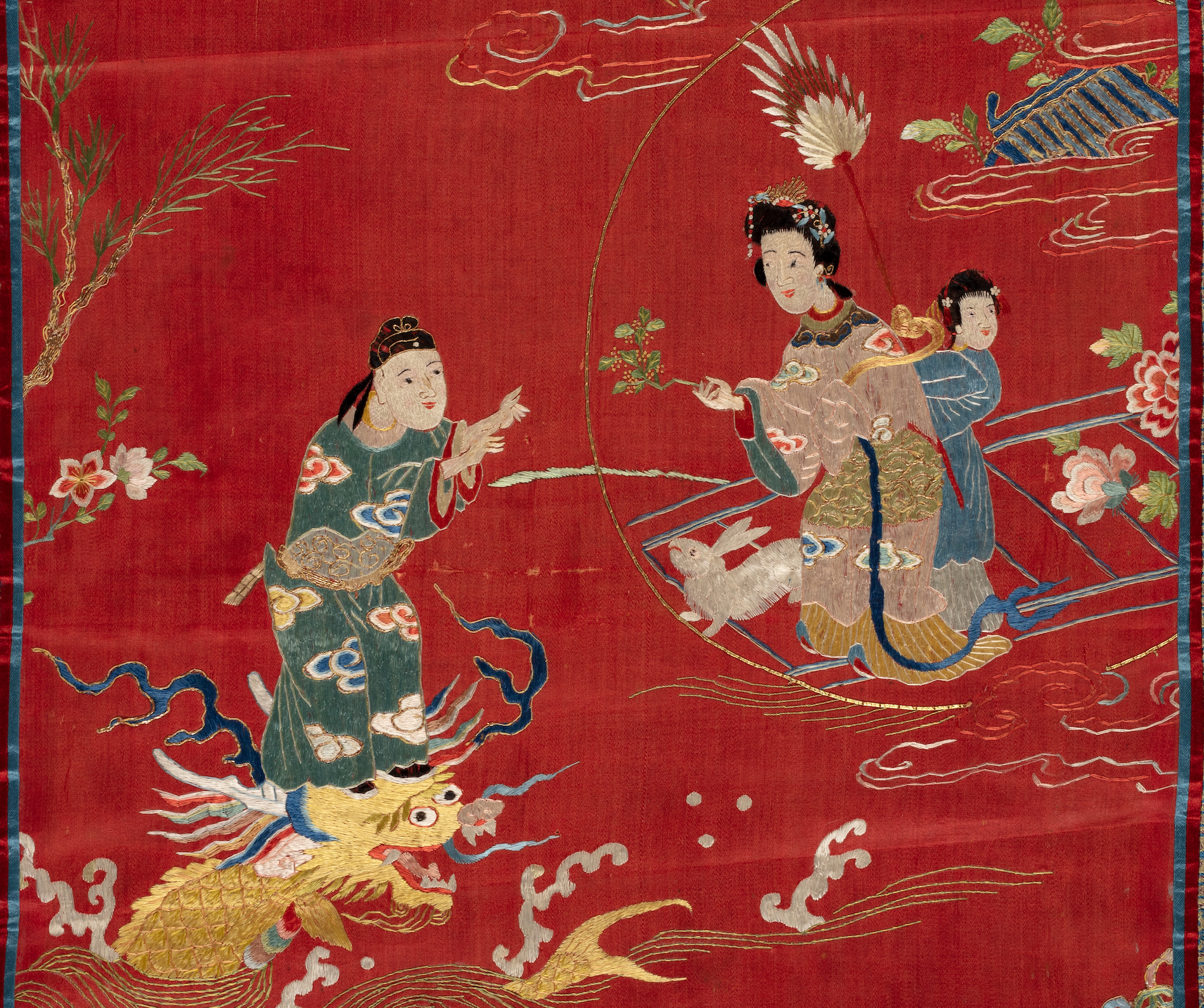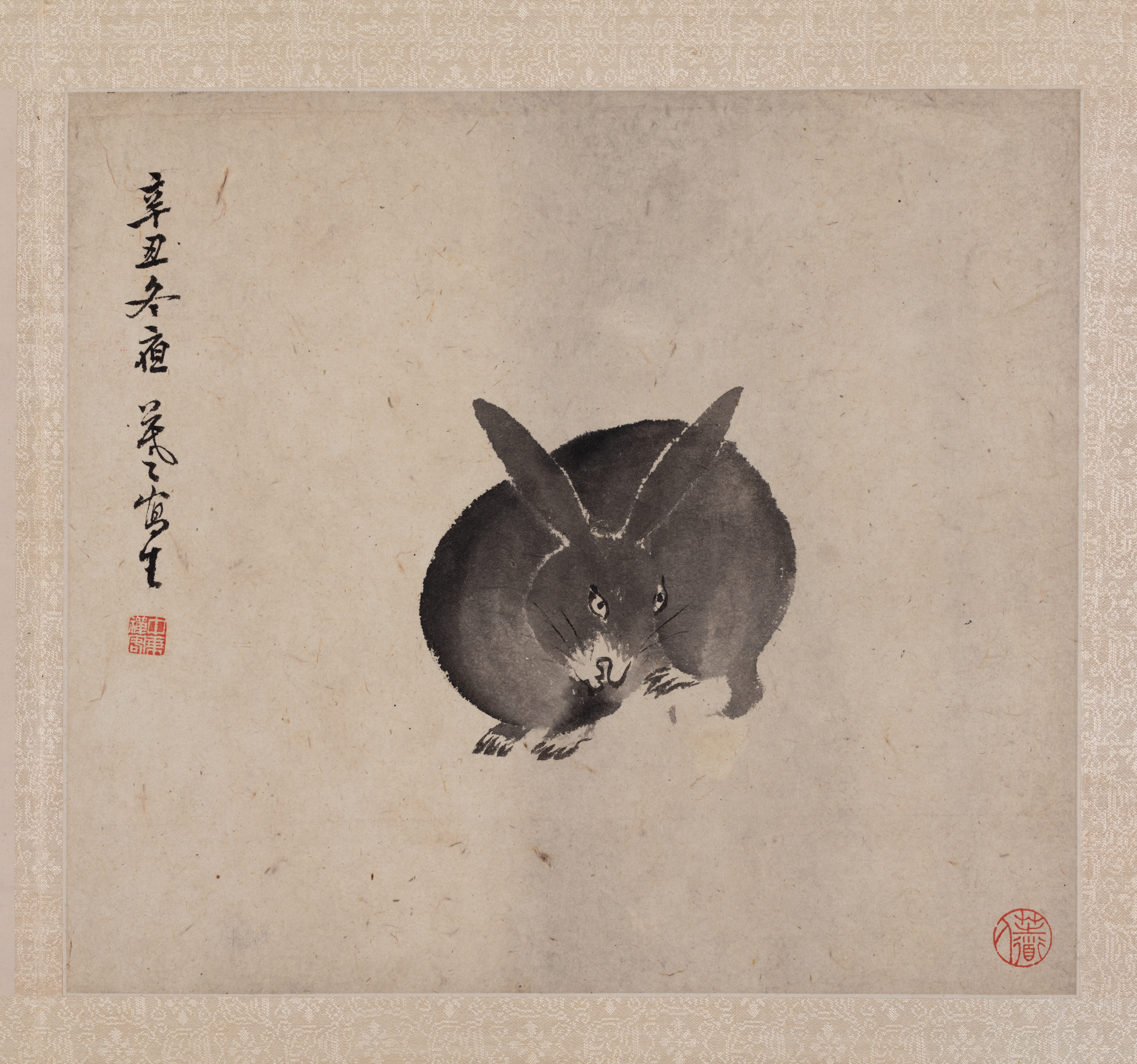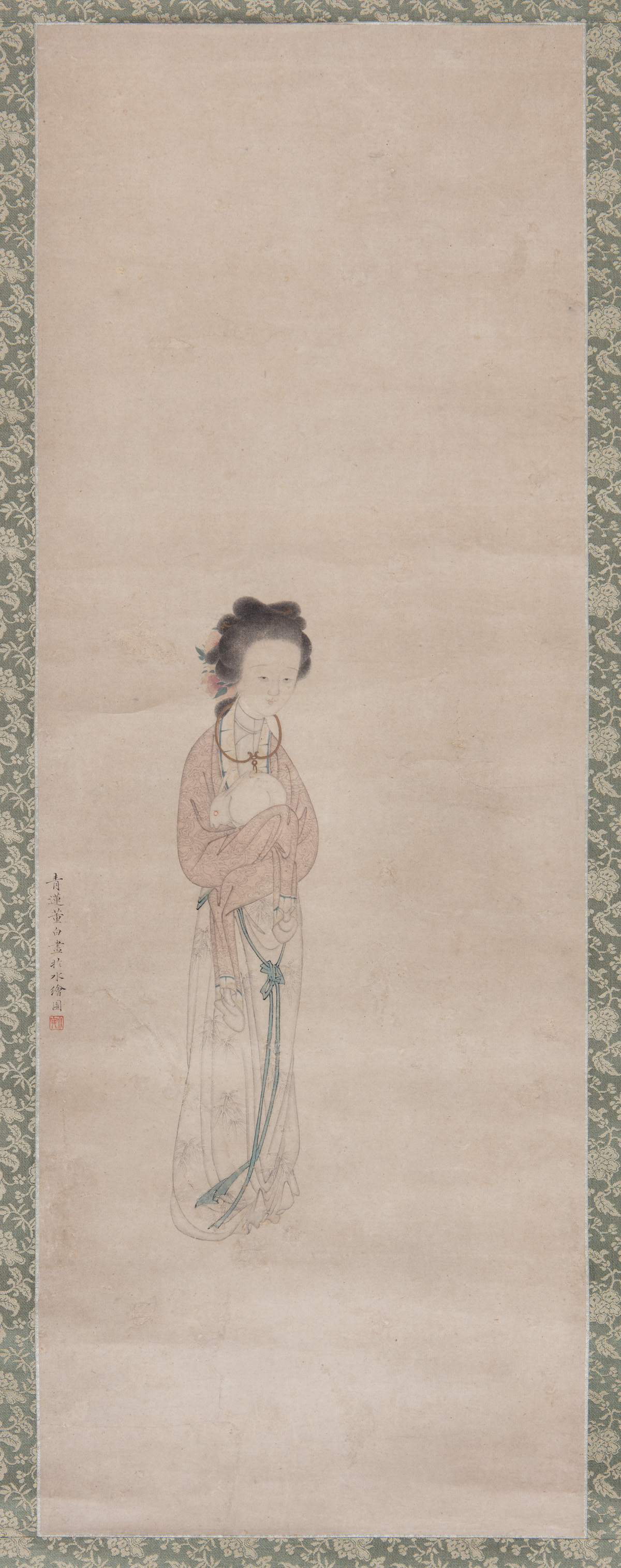Year of the Rabbit: Auspicious Blessings from the Moon Goddess, Chang’e
Happy New Year! The Year of the Rabbit begins on Sunday, January 22, 2023 with Lunar New Year celebrations ringing out across Asia and beyond. As the fourth zodiac animal, the rabbit (or “hare”) is a common motif in Chinese art and found throughout the Mactaggart Art Collection, including in this leaf from the Album of Flowers and Birds (2004.19.73.1.9), attributed to Luo Ping. In Chinese culture the rabbit symbolizes luck and fertility and also has a close association with the moon.
Chang’e is the Chinese moon goddess, and is often depicted with a rabbit in poems, paintings, embroidery and other forms of material culture. In the Mactaggart Art Collection Chang’e can be found on this early Qing Dynasty hanging scroll, Moon Goddess by Dong Bai (2004.19.17).
The rabbit held by Chang’e alludes to the story of how she transformed into the moon goddess by drinking an immortality elixir meant for her husband, the great archer Hou Yi, and floating to the sky. This rabbit, who accompanied Chang’e on her eternal trip, is a symbol of the moon and is one of the Twelve Symbols of Imperial Authority - often depicted as mixing the elixir of immortality with a mortar and pestle.
The moon goddess is also often depicted bestowing blessings related to young men’s success in the imperial examinations. The Mactaggart Art Collection includes this Embroidered Red Silk Panel (2005.5.468) from the Qing Dynasty, which depicts Chang’e with a servant and rabbit on the right side and a young man standing on a dragon on the left.
The symbolism within this panel likely alludes to a blessing of professional success for the young man on the dragon. This can be determined by the tail of the dragon, which resembles a carp tail, possibly illustrating the saying "Liyu (Carp) jumps over the Dragon Gate" (鯉躍龍門). This relates to one uplifting their status by passing the imperial examinations and is meant to encourage young students to persevere and study hard. Chang’e also appears to be offering a sprig of osmanthus fragrans (桂花), which grows in shrubs throughout Asia and has medicinal, ornamental and aromatic uses. Her offering of the osmanthus twig furthers this auspicious message of success through imperial examinations, as the Chinese phrase “pluck osmanthus in the Toad Palace1" (蟾宮折桂) means to pass the exam. This motif of Chang’e and young man is seen on other extant Qing Dynasty material culture, including this mirror case from the 19th century.

Detail of "Embroidered Red Silk Panel," Qing 19th Century; polychrome and metal-wrapped silk floss embroidered on silk satin; Mactaggart Art Collection, University of Alberta Museums; Gift of Sandy and Cécile Mactaggart; 2005.5.468
See more objects from the Mactaggart Art Collection that feature symbols for the Lunar New Year. The rabbit is not always obvious in some of the objects -- see what you can find!

